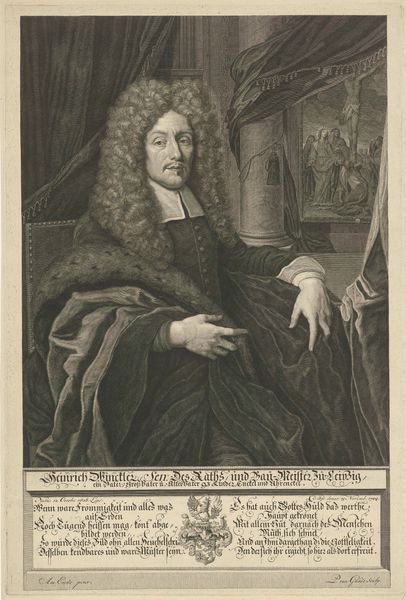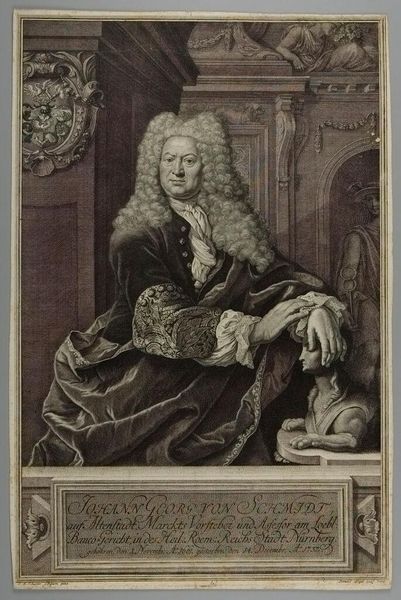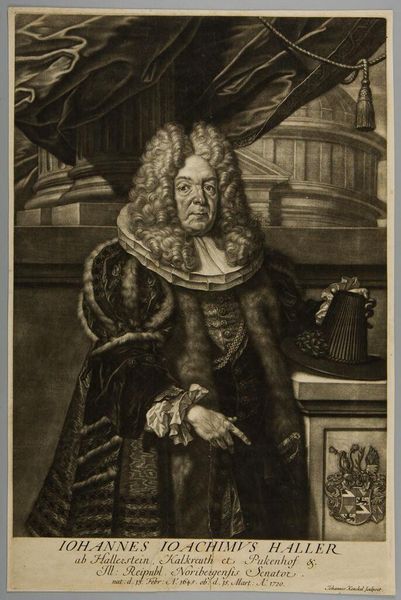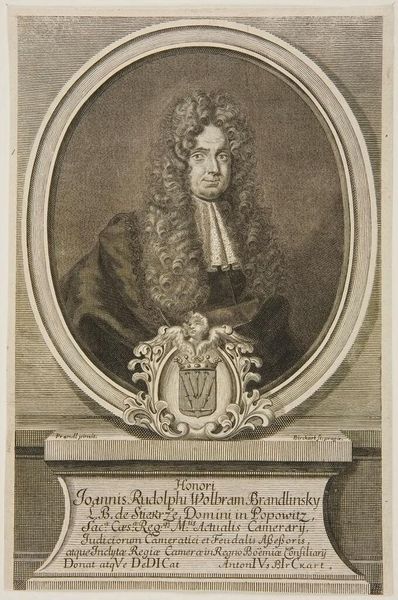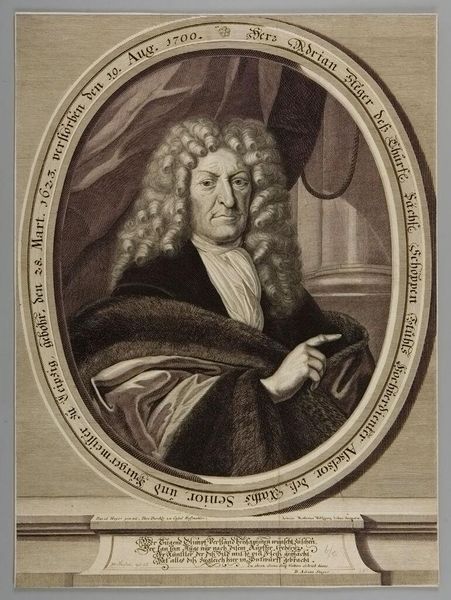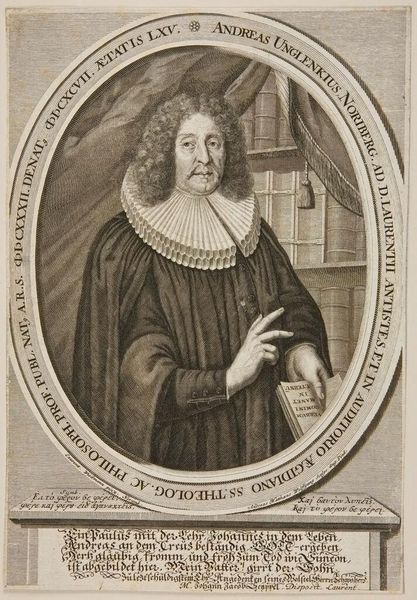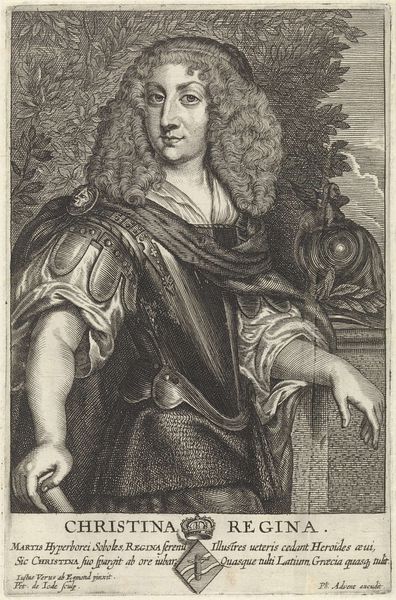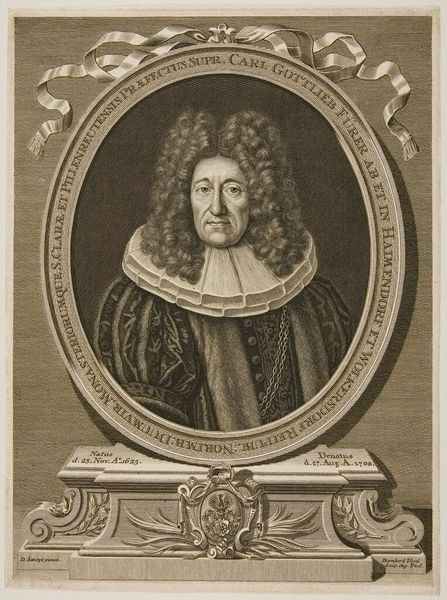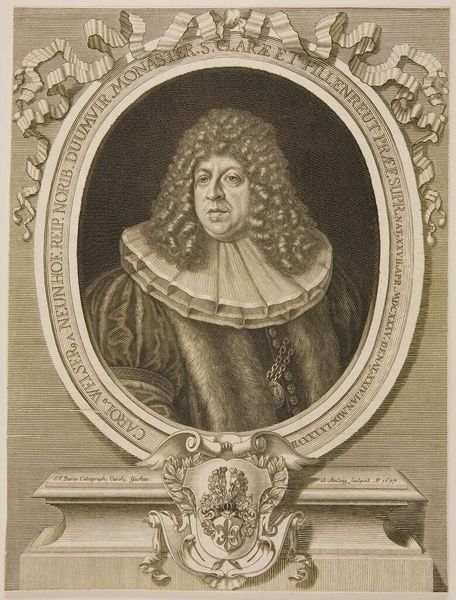
Copyright: CC0 1.0
Curator: Here we have Pieter van Gunst's portrait of Heinrich Winckler. Van Gunst, born in 1659, was a prominent engraver known for his detailed portraits. Editor: It’s quite striking. The textures—especially that wig and the heavy drapery—give it a palpable weight. What was Winckler's role in Leipzig? Curator: Winckler was a senior councilor and master builder in Leipzig. The portrait likely served as a form of civic commemoration. Editor: It's fascinating how the engraving process, itself a kind of industrial reproduction, elevated Winckler's status and reinforced the city's power structure. Think of the skilled labor involved. Curator: Precisely. The visual language here—the classical column, the religious scene in the background—all contribute to an image of authority and piety. It's about constructing a lasting legacy. Editor: You know, looking at the print, I start considering the division of artistic labor and social class during the period. This piece is more than just an image of a man. Curator: Indeed. It's a confluence of artistry, societal values, and the very mechanics of image-making. Editor: It's left me thinking about art's tangible, enduring contribution to social and political power.
Comments
No comments
Be the first to comment and join the conversation on the ultimate creative platform.
